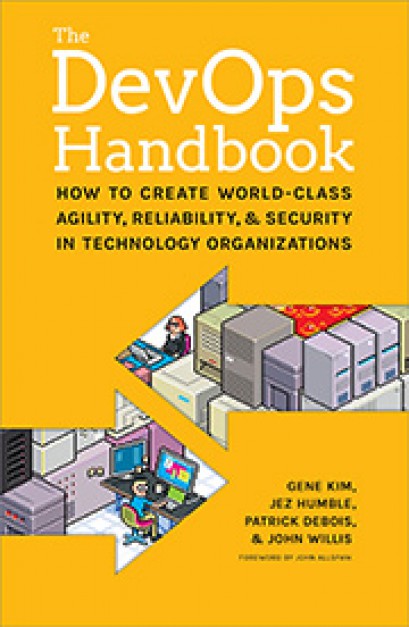15 March 2023

Digital transformation is the process of using technology to change the way a business operates fundamentally. As organisations strive to modernise their systems and operations, new technologies such as Artificial Intelligence (AI), Internet of Things (IoT), and Serverless Computing are becoming increasingly important. This blog post will explore how these technologies can work together to achieve digital transformation and discuss their benefits.
Artificial intelligence (AI) is a branch of computer science that focuses on creating machines that can learn, reason, and make decisions like humans. Organisations can use AI to automate repetitive tasks, analyse data, and make predictions. AI is revolutionising the modern business landscape. It is being utilised in various applications, from self-driving cars to chatbots to fraud detection, making it a versatile and valuable tool for businesses. Organisations can use AI in digital transformation to improve operational efficiency, reduce costs, and create new revenue streams.
Sephora, a multinational beauty retailer, has used AI and machine learning to create new revenue streams and improve the customer experience. One example is the Sephora Virtual Artist, a mobile app that uses AI-powered augmented reality to allow customers to virtually try on different makeup products and receive personalised product recommendations. As a result, Sephora has increased its average order value and seen higher conversion rates. The success of the Virtual Artist has led the company to expand its use of AI in other areas, such as inventory management and supply chain optimisation.
The Internet of Things (IoT) is the network of physical devices, vehicles, home appliances, and other items embedded with electronics, software, sensors, and network connectivity that enables these objects to connect and exchange data. IoT devices allow organisations to collect real-time data, monitor equipment performance and automate processes. As a result, organisations can use IoT to improve customer experience, optimise operations, and create new business models as part of their digital transformation.
Rolls-Royce uses AI to scale up IoT capability of its sensors to monitor the performance of its jet engines in real-time, enabling the company to identify potential issues early and prevent costly downtime. The data collected also allows for engine design improvements and optimised performance, resulting in significant cost savings and improved efficiency for the company.
AI and IoT can work together to create new opportunities for digital transformation. For example, organisations can use AI to analyse data collected by IoT devices, identify patterns, predict failures, and improve decision-making. IoT can also provide the data that AI needs to learn and improve its performance. By combining AI and IoT, organisations can create intelligent systems that can automate processes, optimise performance, and provide better customer experiences.
Serverless computing is a new way of deploying and running applications without dedicated servers. In a serverless architecture, the cloud provider manages the infrastructure, and the application runs in response to events triggered by user actions or system events. This approach offers several benefits for digital transformation, including lower costs, increased scalability, and faster time-to-market. Organisations can use serverless computing to support AI and IoT applications, making it a powerful tool for digital transformation.
Organisations can use serverless computing to deploy and run AI models that support IoT applications. For example, an IoT device could trigger a serverless function that collects data and sends it to a cloud-based AI model for analysis. The AI model can provide insights or predictions that organisations can use to optimise operations or improve customer experience. Organisations can use serverless computing to deploy and run IoT applications that require real-time processing, such as monitoring or predictive maintenance systems.
As organisations adopt new technologies like AI, IoT, and serverless computing, it is essential to consider the security implications. Organisations must implement security measures, including securing access to the cloud provider's resources, securing data in transit and at rest, and implementing security policies that protect against cyber threats. In a serverless architecture, organisations must integrate security into the application design from the start, for example. DevOps and AIOps can incorporate security into the development process and ensure that applications are secure and compliant.
Siemens AG, a German multinational conglomerate, has undergone a significant digital transformation over the past decade. In 2018, the company launched a new IoT platform called MindSphere, which uses AI and machine learning to analyse data from connected devices and sensors. MindSphere has helped Siemens to improve its manufacturing processes, reduce downtime, and improve product quality. The company also uses serverless computing to support its IoT applications, which has allowed it to scale rapidly and reduce costs. According to Siemens, the company has saved $20 million in three years using MindSphere to optimise its manufacturing processes.
Digital transformation is no longer just a buzzword; it is a critical process for organisations that want to stay competitive in today's rapidly changing business environment. AI, IoT, and serverless computing are powerful tools enabling organisations to create intelligent systems that drive growth and innovation and build a foundation for success in the future.
However, implementing these technologies requires a significant investment of time and resources and can bring new challenges, including security risks, integration issues, and the need for specialised skills. To fully realise the benefits of digital transformation, organisations must develop a comprehensive strategy that addresses these challenges and aligns with their business goals.
By leveraging the power of AI, IoT, and serverless computing, organisations can create more efficient and effective operations, improve customer experiences, and drive growth and innovation. Leveraging the power of AI, IoT, and serverless computing can lead to new revenue streams, reduced costs, and improved operational efficiency, giving businesses a competitive advantage in the digital age.
Working with a team of experts who can help guide you through the process is essential to ensure a successful digital transformation. From strategy development to implementation and beyond, having a partner who can help you navigate the complex landscape of modern technology is crucial. By embracing AI, IoT, and serverless computing, organisations can create intelligent systems that drive growth and innovation and build a foundation for success in the years to come.

